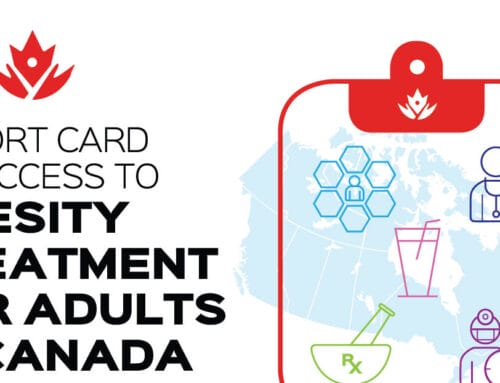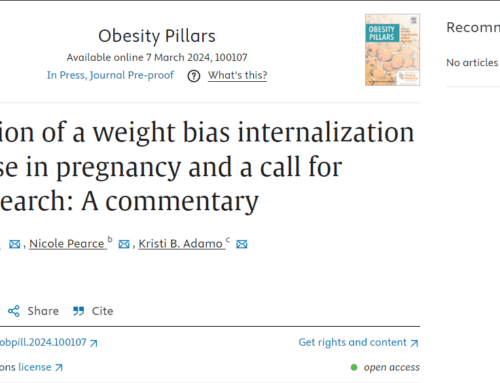by Ian Patton
Last week, a story broke on social media that caught my attention, about how individuals living in larger bodies experience messaging about exercise and activity. The insulting body-shaming text from a fitness advertisement that appeared next to the story read, “This summer, do you want to look like a mermaid or do you want to look like a whale?”
As a kinesiologist and exercise physiologist, it is moments like these that remind me why I left the fitness industry and why I am sometimes ashamed of my peers. All too often, the fitness industry is predatory, inappropriately using aggressive shame-and-blame and outright weight bias as a sales tactic to get you to sign up for their boot camp or their $5000 personal training package.
Let me be clear, that bootcamp might be something you enjoy and that personal training package might be worth every penny for you.
However, my issue is how many programs attempt to shame people into participation. The tactics being used perpetuate a false narrative around obesity, weight and bodies, and make the fitness industry inaccessible for a large portion of the population. Size does not equal health, your body does not dictate your worth and obesity is a chronic disease that is far more complex than simplistic solutions such as “eat less and move more.”
We know that activity is one of the greatest things you can do for your health. With positive influence on everything from mental health, sleep, energy levels and productivity to the almost infinite benefits to physiological health markers, being more active is something almost everyone on the planet should strive to do. We also know that exercise is not the cure for obesity. Your body and your weight are very complex systems, and some factors out of your control. This is why exercise programs are not effective for weight loss and often fail to achieve the desired goals, leading to a rebound (sadly all the non-weight related benefits to exercise are typically ignored). We also know that shaming and blaming does not work (if it did we would not have the obesity problem we do, because as individuals living with obesity, we experience copious amounts of both). Many people avoid activity and the fitness industry due to this lifetime of shame and blame and the anxiety of trying something knowing that we will be judged, mocked and ridiculed.
These sales tactics only reinforce what we already tell ourseoves: the world of fitness and activity is not safe for us.
I worked for a short time at a gym with a desire to break that system and to make the gym safe place for all. I did not succeed, and quickly realized that my beliefs and passion were not congruent with the aggressive sales pitch of most fitness facilities. I would like to use this space to help in anyway I can, to promote body positivity and encourage health-related activity for all.
To start, I thought I would share some very basic activity/exercise information.
“No pain-no gain” is a bunch of garbage!
Exercise does not need to hurt, you do not need to run marathons to be healthy and you do not need to be obsessed or extreme to gain health benefits of activity. The Canadian guidelines for adult physical activity are 150 minutes of moderate to vigorous activity every week. However, your activity goals should be relative to your personal situation and starting point. To begin, forget about guidelines and simply find a way to move your body more today than you did yesterday. Walking could be sufficient to improve health for many.
Find something you enjoy
Being active should be something you enjoy doing so you will continue to do it. Some may like getting up at 5:00 am to go to the gym to lift a bunch of heavy things and put them down again, followed by sprints on a treadmill. All the power to them. This, however, does not mean that it is right for everyone; if it makes you question your sanity or makes you less enjoyable to be around, try something different. You can increase your activity a thousand different ways: walking, hiking, yoga, dance, martial arts, sports, biking, canoeing, gardening…you name it, if it is more movement than you did yesterday, then good job! Have fun!
Start SLOW……real slow
Especially for those of us who have not been active for a long time, it can take a while for our bodies to adapt to the new movement. Do not expect rapid crazy results or think you can jump back into something you did 20 years ago with ease. Be patient with yourself but consistent, and make sure you include plenty of rest to allow your body to recover. For some that might be taking a day or two between bouts of activity at first.
Be confident – you deserve the best
You deserve to be here, and you deserve to be happy. Enjoying being active is a basic human right – own it and don’t give air to anyone who says otherwise. I know, easier said than done in this world, but when it comes down to it, know you are not alone, find your support network and encourage each other. Collectively we can make activity a safe space and we can make the shaming and bias socially unacceptable by showing our strength in numbers and calling it out.
I would love to help in anyway so if you have a question about being active that you would like answered please let me know by clicking here.
Ian Patton, PhD, RKin, CEP is a Registered Kinesiologist, Certified Exercise Physiologist and a bariatric patient. The information in this post is for informational purposes only. Anyone thinking about increasing their activity should consult their physician to ensure it is safe to do so.
Image: Fe Ilya/Flickr/CC-by-SA-2.0






